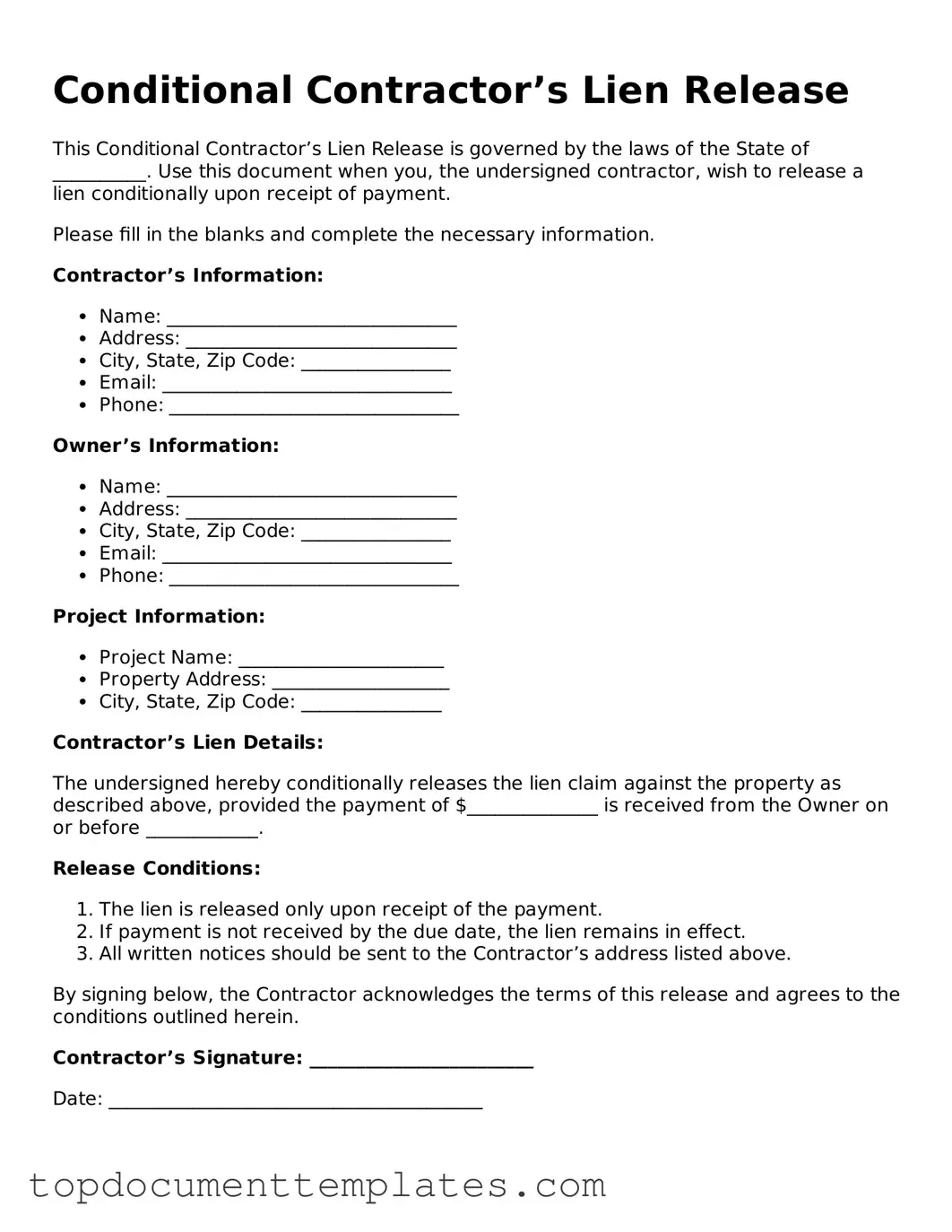Official Conditional Contractor’s Lien Release Template
The Conditional Contractor’s Lien Release form is a legal document that allows a contractor to release their lien rights on a property conditionally, typically upon receipt of payment. This form protects both the contractor and the property owner by ensuring that the contractor receives payment before relinquishing their claim to the property. Understanding how to properly fill out this form is crucial for maintaining clear communication and trust in construction projects.
To fill out the form, click the button below.
Open This Form
